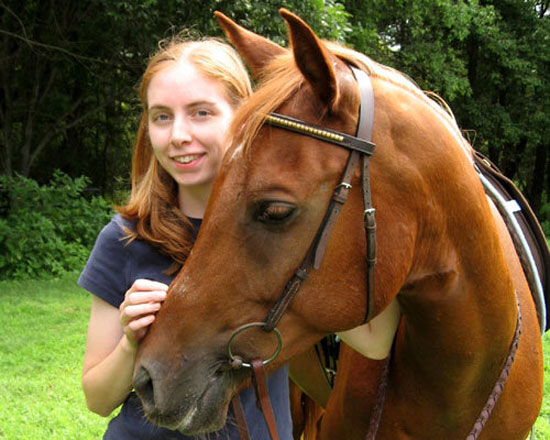5 Tips for a horse’s first trail ride – Delilah’s big day out

At my barn, where we teach lessons through the year as well as summer camp, it’s imperative that our horses be as “worldly” as possible. Our newest lesson mount, Delilah, had learned the ropes in the ring and passed her spookiness test getting dressed as a butterfly in the local horse show, so it was time to hit the trails! Although she had her squirrely moments out there (always fun on a pony that looks like she walked out of a Thelwell comic), I’d say her first trail ride was a definite success. We’re looking forward to as many miles on the trail as her little legs (and pony-sized patience) can manage. In the meantime, here are my tips for making the first time on the trails a positive experience for rider and horse (or pony):
- Bring a buddy: Horses are herd animals, therefore, a buddy can be your biggest asset. The best buddy is a seasoned trail mount. In my case, I put my friend on my trail horse, Sam, and had him lead the way. The horse in the lead tends to be more alert, while the one behind is a bit more likely to relax knowing that someone else is looking out for their tiny herd. If you have more than one steady buddy horse that’s great, but a large group (especially if it is horses who don’t know each other previously) can create other issues. If you don’t have a buddy at your barn, ask around! And if you already have a good trail horse, put yourself out there!
- Pick trails that you know: You don’t need to know a particular spot like the back of your hand, but some basic knowledge of it could prove critical. You’ll be calmer if you know where you’re going (and how to get back), and by extension so will your horse. Better yet if your buddy horse has also been there and knows that that boulder belongs there, that the stream is only five inches deep, and those flags are normal. It also helps to know where the safe dismount and remount places are, should you need to do either. There’s plenty of time to go exploring—maybe even on your next ride—but first time out isn’t about being Lewis and Clark.
- The scary stuff: I’m always surprised by the seemingly terrifying things my horse walks right past (man with three cameras jangling off his shoulder), and the stuff that freaks him out (large boulders). In Delilah’s case, it was a pair of Great Danes coming toward us that definitely weren’t in her internal wildlife guide. She was watching them from the second they came into view waaaaayyyy down the trail. Be aware so you can be prepared, but don’t make a mountain out of a molehill by fixating on the same thing as your horse—you’ll psych both of you out! Be ready to ask people walking dogs or riding bikes to stop where they are if possible—it’s for their safety as much as yours! If this isn’t an option (or the offending person is oblivious) remember that you don’t lose points for hopping off and helping your horse past something.
- The safety stuff: There is lots of trail-riding safety advice out there, for all sorts of conditions, so I’ll just suggest that you be familiar with what makes sense for you. For me, I keep blaze orange or reflective gear on hand for hunting season and riding on the road. I’ve practiced dismounts and emergency stops. I always ride with my cell phone (I mean, who doesn’t post pictures looking through your horse’s ears?!?). And although I hardly ever ride alone, I always make sure someone knows where I’m going and when to expect me back.
-
Gear up! Nothing is more annoying than getting out on the trails and realizing you forgot your _________ (insert necessary item of choice here). Here are my must-haves:
- Saddle bag – helpful when you need to have water, a hoof pick, basic first aid items, etc. on hand
- Reflective Mesh Quarter Sheet – super for visibility AND bugs
- Crusader Fly Mask – Quiet-Ride – made to be used under or over your bridle to help keep the bugs from bothering your horse during your ride
- 2 Step Mounting Block
- SunShield Longsleeve Shirt by SmartPak – the less I have to slather on sunscreen, the better!
Happy trails!